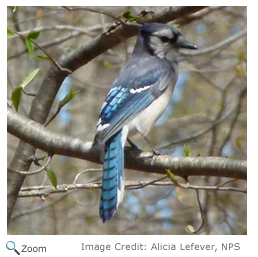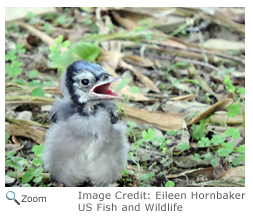Blue Jay - Cyanocitta cristata |
|||||||||||
Description
Range
|
HabitatThe blue jay is common in deciduous forests. It is also found in residential areas. Diet Life Cycle BehaviorThe blue jay is very aggressive and territorial. Groups of blue jays often attack intruders and predators. They often drive other birds away from bird feeders. The blue jay is also very vocal. It makes a number of different calls including its distinctive "jay- jay." It also growls, whistles, and chatters. |
||||||||||
Audio Credit: xeno-canto.org Chris Parrish |
|||||||||||

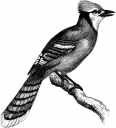
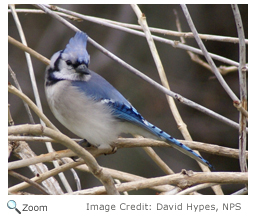
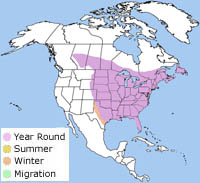 The blue jay is found in southern Canada and in the United States, east of the Rocky Mountains. The blue jay is
The blue jay is found in southern Canada and in the United States, east of the Rocky Mountains. The blue jay is 